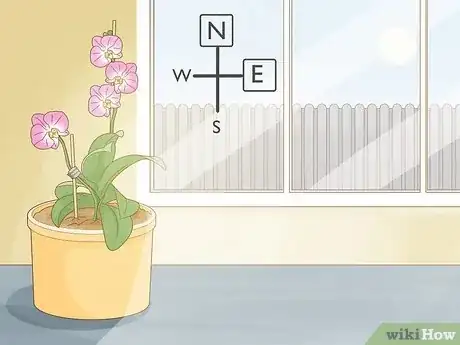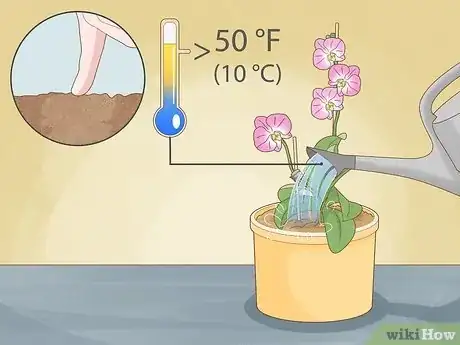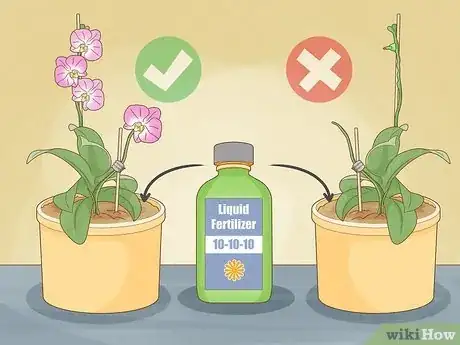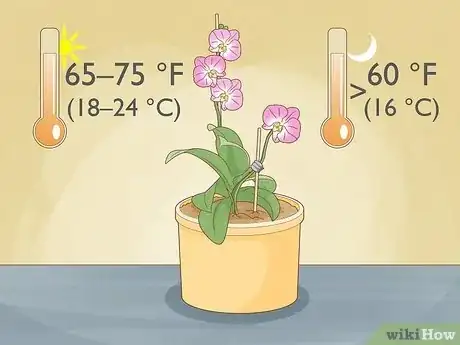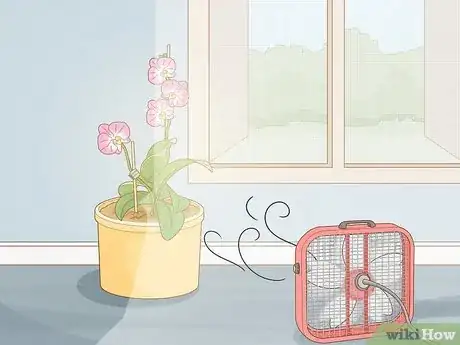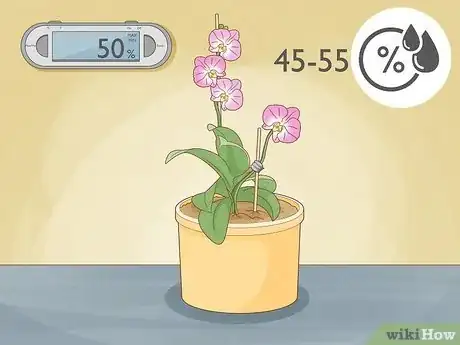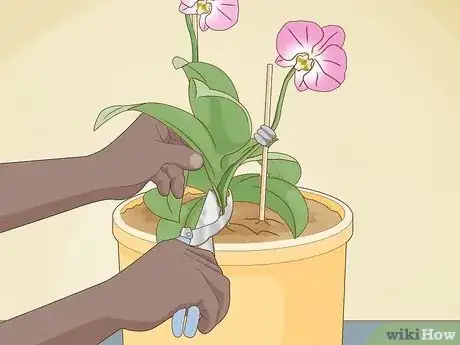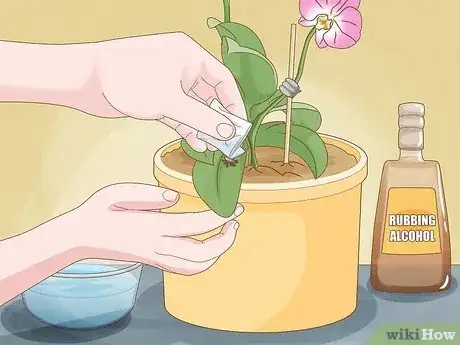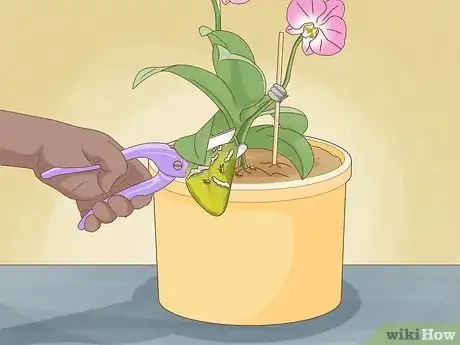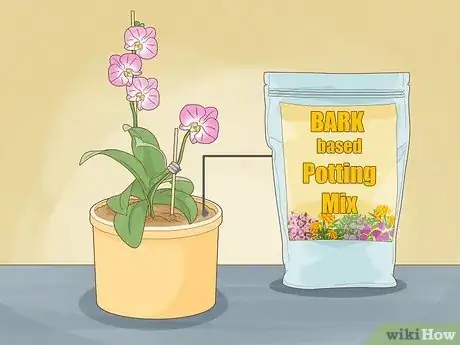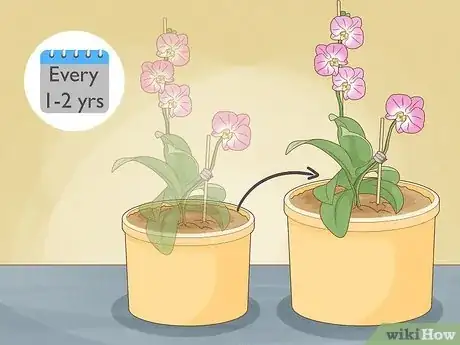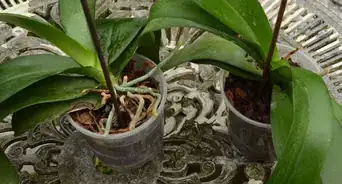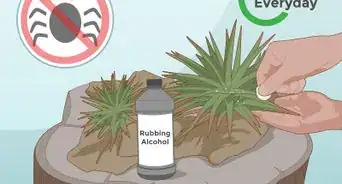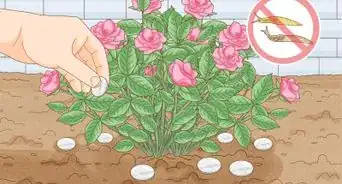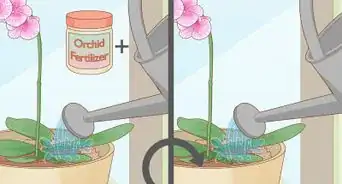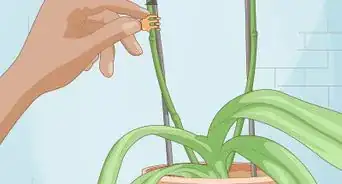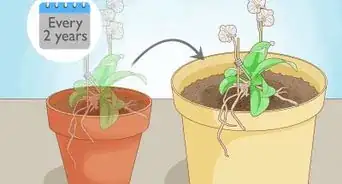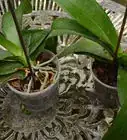This article was co-authored by Matt Bowman and by wikiHow staff writer, Hunter Rising. Matt Bowman is a Gardener, Landscaper, the Owner of Georgia Farm to Table, and the Owner of Tradition Property Services in Atlanta, Georgia. With over 20 years experience, he specializes in organic gardening, landscape maintenance, handyman services, homecare services, and supplying Christmas trees. Matt earned a BA in Journalism from the University of Georgia.
There are 9 references cited in this article, which can be found at the bottom of the page.
wikiHow marks an article as reader-approved once it receives enough positive feedback. This article received 93 testimonials and 85% of readers who voted found it helpful, earning it our reader-approved status.
This article has been viewed 4,630,722 times.
Do you love the look of big and bright orchids in your home? If you want to grow these fresh flowers, orchids are really easy to keep as houseplants under the right conditions. Orchids have a few different requirements than other flowers you might grow at home, but we’ve got everything you need to know right here. Keep reading, and we’ll cover all of the basic plant care for your orchids so they continue to grow and bloom for years to come!
Things You Should Know
- Keep your orchid in bright, indirect sunlight.
- Water your orchid when the soil has almost dried out completely.
- Fertilize your orchid once a week during the spring and summer with a balanced 10-10-10 fertilizer diluted to quarter-strength.
- Grow your orchids in a pot with drainage holes filled with bark-based potting mix or moss-based medium.
Steps
Expert Q&A
Did you know you can get expert answers for this article?
Unlock expert answers by supporting wikiHow
-
QuestionHow often should you water an orchid?
 Matt BowmanMatt Bowman is a Gardener, Landscaper, the Owner of Georgia Farm to Table, and the Owner of Tradition Property Services in Atlanta, Georgia. With over 20 years experience, he specializes in organic gardening, landscape maintenance, handyman services, homecare services, and supplying Christmas trees. Matt earned a BA in Journalism from the University of Georgia.
Matt BowmanMatt Bowman is a Gardener, Landscaper, the Owner of Georgia Farm to Table, and the Owner of Tradition Property Services in Atlanta, Georgia. With over 20 years experience, he specializes in organic gardening, landscape maintenance, handyman services, homecare services, and supplying Christmas trees. Matt earned a BA in Journalism from the University of Georgia.
Gardener & Owner, Tradition Market & Garden
-
QuestionAfter flowering, should I cut off any brown or dead looking stalks?
 Lauren KurtzLauren Kurtz is a Naturalist and Horticultural Specialist. Lauren has worked for Aurora, Colorado managing the Water-Wise Garden at Aurora Municipal Center for the Water Conservation Department. She earned a BA in Environmental and Sustainability Studies from Western Michigan University in 2014.
Lauren KurtzLauren Kurtz is a Naturalist and Horticultural Specialist. Lauren has worked for Aurora, Colorado managing the Water-Wise Garden at Aurora Municipal Center for the Water Conservation Department. She earned a BA in Environmental and Sustainability Studies from Western Michigan University in 2014.
Professional Gardener
-
QuestionNew leaves are growing at the end of two separate flower spikes and air roots. Should I just leave them on the parent plant?
 Lauren KurtzLauren Kurtz is a Naturalist and Horticultural Specialist. Lauren has worked for Aurora, Colorado managing the Water-Wise Garden at Aurora Municipal Center for the Water Conservation Department. She earned a BA in Environmental and Sustainability Studies from Western Michigan University in 2014.
Lauren KurtzLauren Kurtz is a Naturalist and Horticultural Specialist. Lauren has worked for Aurora, Colorado managing the Water-Wise Garden at Aurora Municipal Center for the Water Conservation Department. She earned a BA in Environmental and Sustainability Studies from Western Michigan University in 2014.
Professional Gardener
References
- ↑ https://www.extension.iastate.edu/news/yard-and-garden-growing-orchids-home
- ↑ https://extension.tennessee.edu/publications/Documents/PB1634.pdf
- ↑ https://extension.umd.edu/resource/overwatered-indoor-plants
- ↑ https://extension.tennessee.edu/publications/Documents/PB1634.pdf
- ↑ https://warren.cce.cornell.edu/gardening-landscape/warren-county-master-gardener-articles/orchids-as-houseplants
- ↑ https://www.johnson.k-state.edu/docs/lawn-and-garden/in-house-publications/houseplants/How%20to%20Care%20for%20Orchids.pdf
- ↑ https://warren.cce.cornell.edu/gardening-landscape/warren-county-master-gardener-articles/orchids-as-houseplants
- ↑ https://hortnews.extension.iastate.edu/growing-orchids-indoors
- ↑ https://gardeningsolutions.ifas.ufl.edu/plants/ornamentals/orchids.html
- ↑ https://ipm.illinois.edu/diseases/rpds/614.pdf
- ↑ https://extension.tennessee.edu/publications/Documents/PB1634.pdf
- ↑ https://hortnews.extension.iastate.edu/growing-orchids-indoors
- ↑ https://extension.umd.edu/resource/care-phalaenopsis-orchids-moth-orchids
- ↑ https://extension.tennessee.edu/publications/Documents/PB1634.pdf
About This Article
The best way to take care of your orchid is to place it near a south- or east-facing window that receives strong, indirect light. Water your orchid whenever the soil feels dry, and fertilize it with a 10-10-10 fertilizer once a month while it’s flowering. Make sure the room your orchids are in receives circulation, or set an overhead fan to low if it doesn’t. For help from our Horticulturist reviewer on clearing bugs or removing diseased spots, read on!
